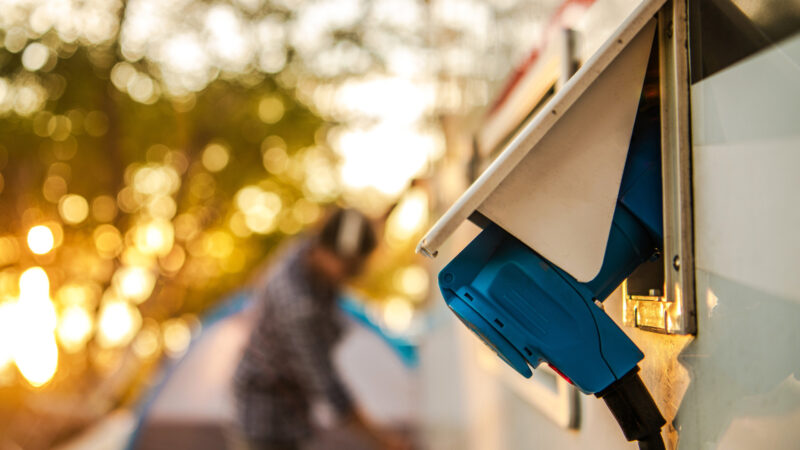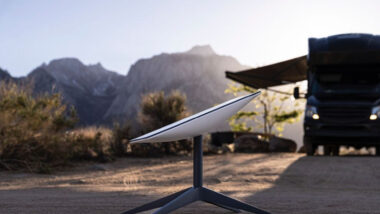Table of Contents Show
If you’re new to the RV world, it may seem daunting to examine many YouTube videos and blog articles to understand RV hookups. But rest assured, you can learn, and it isn’t that challenging. Otherwise, nobody would do it.
Let’s look at RV hookups, what they are, what you need, and the various terminology. Then you’ll have a solid understanding before taking your first camping trip. You don’t want any mistakes regarding RV hookups because they could turn into significant repairs or unfortunate situations. Let’s dive in!
Are RV Hookups Complicated?
There is nothing complicated about RV hookups. Once you’ve set it up several times, you’ll have it down to a science. Some tips help along the way, but you can quickly learn what to hook up and how to do it.
You’ll need the power plug for an electric hookup, a surge protector, a sewer hose with a couple of different ends, and disposable gloves for the sewer hookup. You’ll also need a BPA-free drinking hose and water pressure regulator for the water hookup. There are other helpful accessories, but these are the basics.
What Hookups Are Needed for an RV?
There are three RV hookups: electricity, water, and sewer. If you’re in a self-contained RV, you don’t need any of them. You can pull off on the side of the road and sleep in a Walmart parking lot overnight without needing any hookups. But you can only do that so many times before you need access to electricity, water, and a place to dump your waste tanks.
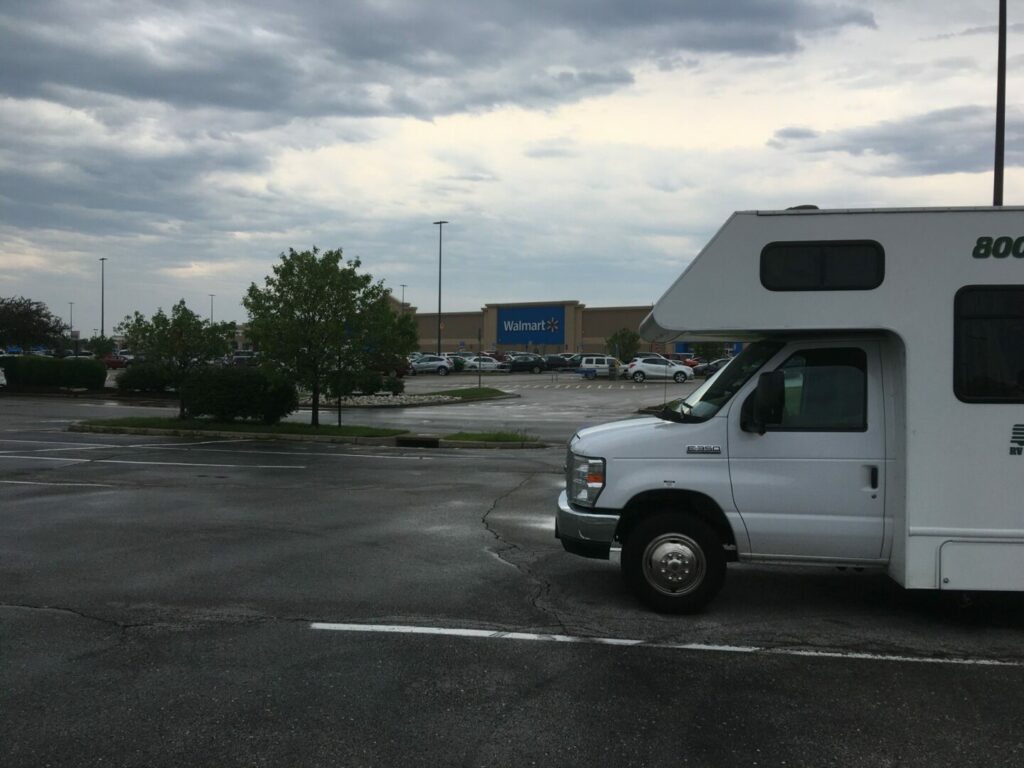
A Breakdown: The Three Types of RV Hookups
Campgrounds offer various hookups. The most common full hookup campsites provide electricity, water, and sewer. If you have a pop-up camper, truck camper, motorhome, or anything in between, these hookups give you the electricity and water you need and a place to dump your waste tanks without moving to a dump station or using a portable waste tank.
RV Electricity Hookup
You must have a power plug to connect your RV to the power supply. The outlet is usually a pedestal at a campsite. A quality surge protector is also essential. Without this protection, any spike in voltage could damage the wiring in your rig. This accessory is a must-have.
When you park at the campsite, ensure the pedestal is off. Then plug in your surge protector and turn on the power. Check the lights and codes to confirm the power flows correctly through the pedestal. Then turn the power back off and connect the power cord to the RV and surge protector. Turn the power back on, and you’ve set up your electricity!
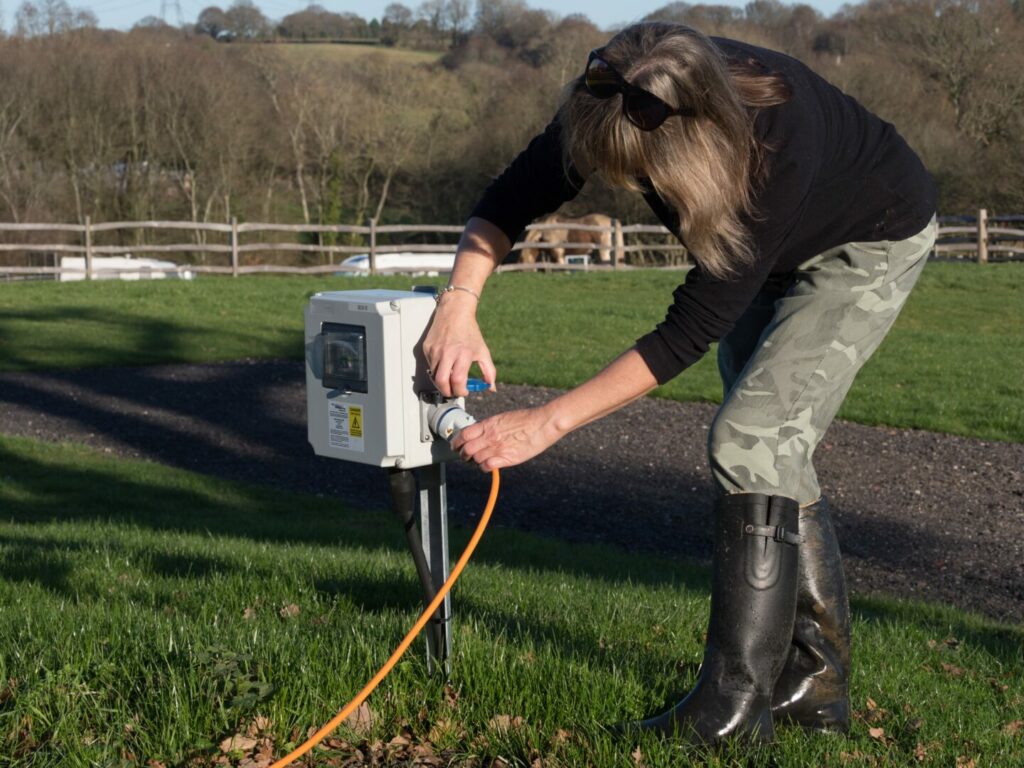
RV Water Hookup
It’s always best to first turn on the water to confirm it’s not brown before hooking up your water hose. Then connect the water pressure regulator to the water source and the water hose to the regulator. Turn on the water and let the water flow through the other end of the hose for a few seconds. This reduces the air pushing through the pipes after the initial hookup.
Turn the water off and connect the hose to the city water connection on your RV. Turn the water on slowly. If you have an adjustable water pressure regulator, ensure the water pressure isn’t above the manufacturer’s suggested water pressure for your RV. Having a water pressure regulator is as crucial as a surge protector. It protects your pipes from too much pressure that could potentially damage the fittings and cause significant problems.
Although not essential, you should also invest in a water filter. The water filter connects to the water pressure regulator, then to the water hose. This accessory filters out harmful chemicals or sediment that may flow from the city water into your RV.
RV Sewer Hookup
When connecting the sewer hookup, always wear disposable gloves. Never touch anything else with the gloves while connecting or disconnecting the sewer hose. This prevents bacteria from spreading and keeps your hands sanitary.
Once at your campsite, take the end cap off the pipe underneath your RV and connect your sewer hose. Extend your sewer hose to the sewer pipe in the ground at your campsite. Connect the other end of your sewer hose by screwing it in or using an attachment to secure the other end. This is why having multiple fittings is crucial because not all sewer connections are the same. Some RVers also place weighted bags or rocks on the connection, so it remains in place.
When emptying your tanks, always pull the valve to the black tank first. Once the black tank is empty, close the valve and open the valve to the gray tank. It’s critical to do it in this order so that the gray water can flush any remaining solid waste inside the sewer hose. Then close the gray tank valve.
Keep in Mind: Make sure you’re setting up your RV the right way and avoid these 5 Common RV Setup Mistakes!
RV Hookups Terminology
When booking sites online or over the phone, it’s essential to know what hookups are available. If you’re only staying one or two nights, it might not be necessary to have full hookups, and you can usually save some money by booking a partial hookup site. Other RVers dry camp without hookups, so let’s take a closer look at this terminology.
Full Hookups
Full RV hookups mean you have electricity, water, and sewer at your campsite. You don’t have to empty your tanks at a dump station or fill your fresh water tank before arriving. Everything you need to send electricity and water to your RV is at your campsite. When your tanks are full, you walk outside, pull the valves, and wait for the tanks to empty.
Partial Hookups
Partial RV hookups refer to campsites with electricity and water only. When your tanks are full, you’ll have to use a portable water tank or drive your RV to a dump station to empty tanks. Partial hookups are suitable for brief stays and are usually less expensive.
- Constructed from blow-molded polyethylene, zinc-plated steel and aluminum
- Front-mounted double wheel-swivel engineered for easy maneuvering and mounted on a heavy-duty, extra large mounting...
Dry Camping
Dry camping and boondocking means you have no hookups. You get power from a generator or batteries. You fill up your fresh water tank with water in town, so you have running water. You’ll have no way to dump your tanks except to drive to a dump station or use a portable waste tank.
Dry camping is sometimes the method RVers prefer if they want to escape the crowds. Dispersed camping sites are available countrywide, where RVers can park their campers and enjoy the scenic beauty for a few nights. Other times, RVers need to park in a Cracker Barrel parking lot for an overnight stay.
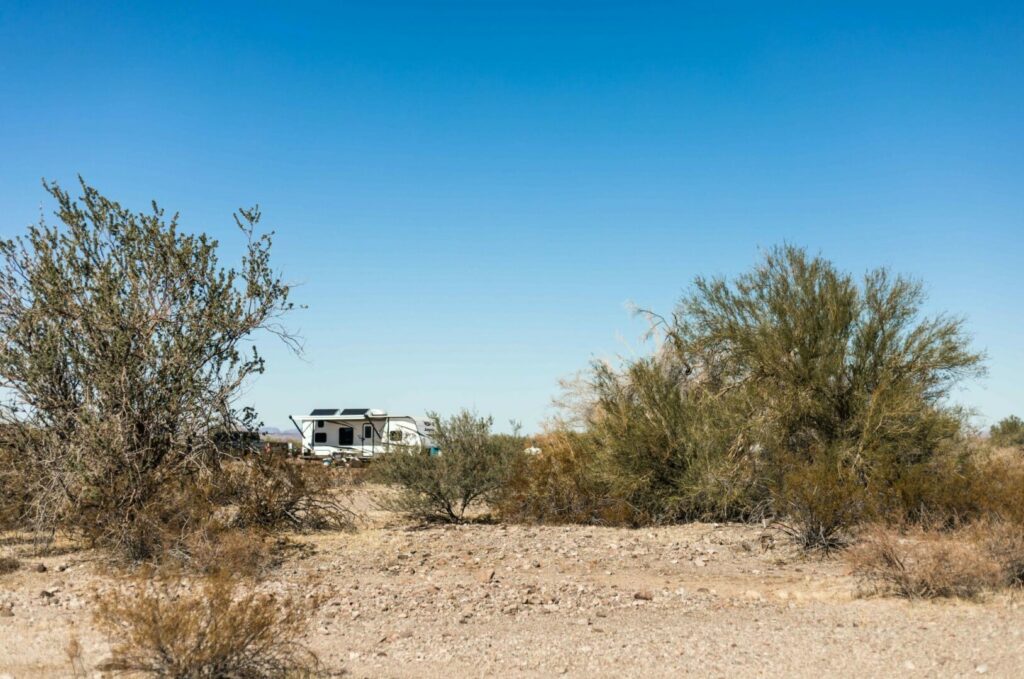
30AMP/50AMP
Most RVs require either 30amp or 50amp electricity. Smaller RVs use less power; larger RVs use more energy. This is usually a result of added air conditioning units. Fifth wheels and motorhomes with two or three air conditioning units require 50amp service to operate simultaneously.
If you’re staying at a campsite with 30amp power hookups and have a 50amp RV, you’ll need a dog bone adapter to connect to the power supply. You’ll have to pay attention to how much power you’re using so you don’t blow a breaker. For example, you probably can’t run a hair dryer, microwave, and air conditioning unit simultaneously.
If you’re staying at a campsite with only 50amp service and have a 30amp RV, you’ll also need a dog bone adapter. You can use the power, as usual, not exceeding 30 amps.
- ETL Listed: RV 30 amp to 110 adapter, 15 Amp NEMA 5-15P male to 30 Amp NEMA TT-30R female adapter, 10 Gauge 125 Volt...
- Heavy Duty: Molded plug, copper wiring coated, heavy duty flame retardant, UV-resistant, STW indoor/outdoor water...
Dump Station
Campgrounds that only offer partial hookups usually have a dump station on site. Most RVers will stop here on the way out to empty their tanks. If you’re staying long-term, you might have to drive your RV to the dump station during your stay or use a portable waste tank. You can take the portable waste tank to the dump station and empty it after collecting the waste from the tanks at your campsite.
When dry camping or boondocking, you’ll need to find a dump station nearby to empty your tanks. Apps like AllStays and Campendium are great to use to find locations. Sometimes there are dump stations at truck stops, larger fuel stations, welcome centers, or rest areas.
Keep in Mind: If you’re new to dry camping, you’ll want to know where the RV dump stations are near you. Here’s How to Find Free RV Dump Stations!
Do All Sites Have Hookups?
You might run into a few campgrounds, especially in high-traffic areas that don’t have RV hookups but require reservations and payment. These sites are usually in National Parks and provide easy accessibility for RVers to explore the area. Often, it’s worth paying to stay in a convenient location even if you don’t receive hookups.
Dispersed camping sites and other boondocking locations won’t have hookups. You pull in and park. Some will have designated parking spaces, while others are a dirt or gravel lot on the side of the road.
Do National Park Sites Have Hookups?
Most National Parks don’t offer full hookup campsites. Some don’t even offer partial hookup campsites. For example, Watchman Campground in Zion National Park provides electric sites but no water or sewer hookups. There is a dump station onsite that also provides potable water. Fishing Bridge RV Park in Yellowstone National Park is the only campground in Yellowstone to provide electric, water, and sewer hookups. For this reason, it’s highly sought-after, and guests must be on top of the booking window to get their reservation.
The Grand Canyon National Park provides dry camping sites in Mather Campground, Desert View Campground on the South Rim side, and North Rim Campground on the North Rim side. Full hookup sites are available in Trailer Village at the South Rim.
You must make camping reservations in Acadia National Park within a 60-day rolling window. Blackwoods Campground and Seawall Campground, two popular camping locations within the park, require reservations and payments for nightly stays, but neither campground has hookups. They provide dump stations and access to potable water.
Choose the RV Hookups You Need for Your Adventures
If you want to camp at many National Parks, it’s best to have a way to provide your electricity and water. Otherwise, you’ll be limited to where you can stay and perhaps miss out on unique experiences. However, if you want to camp close to home at a local, private campground a few weekends a year, you’ll probably have access to full hookups and everything you need.
It’s best to know what hookup you’re paying for when making reservations. Ensure you have all the necessary gear to safely connect everything, like a surge protector, disposable gloves, and a water pressure regulator. Then you won’t be making unnecessary trips to Walmart and miss out on spending quality time with your family in the great outdoors.
Do you have everything you need for your RV hookups?
Last update on 2025-01-19 / Affiliate links / Images from Amazon Product Advertising API




